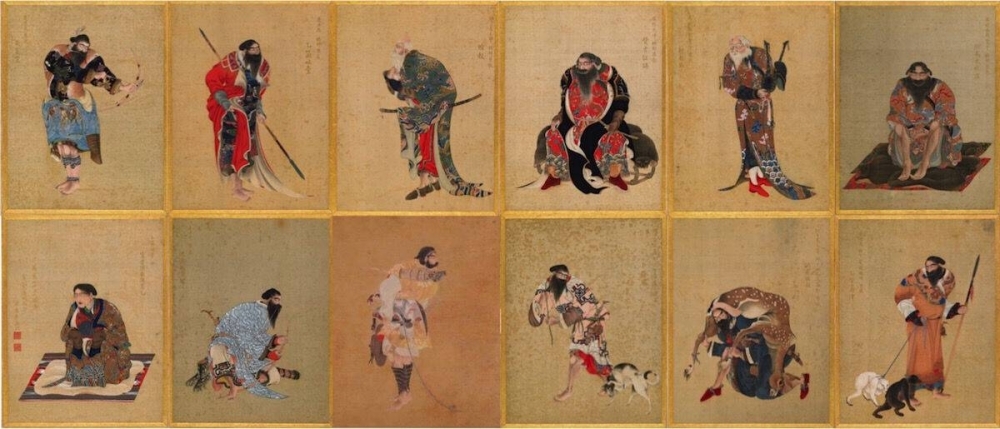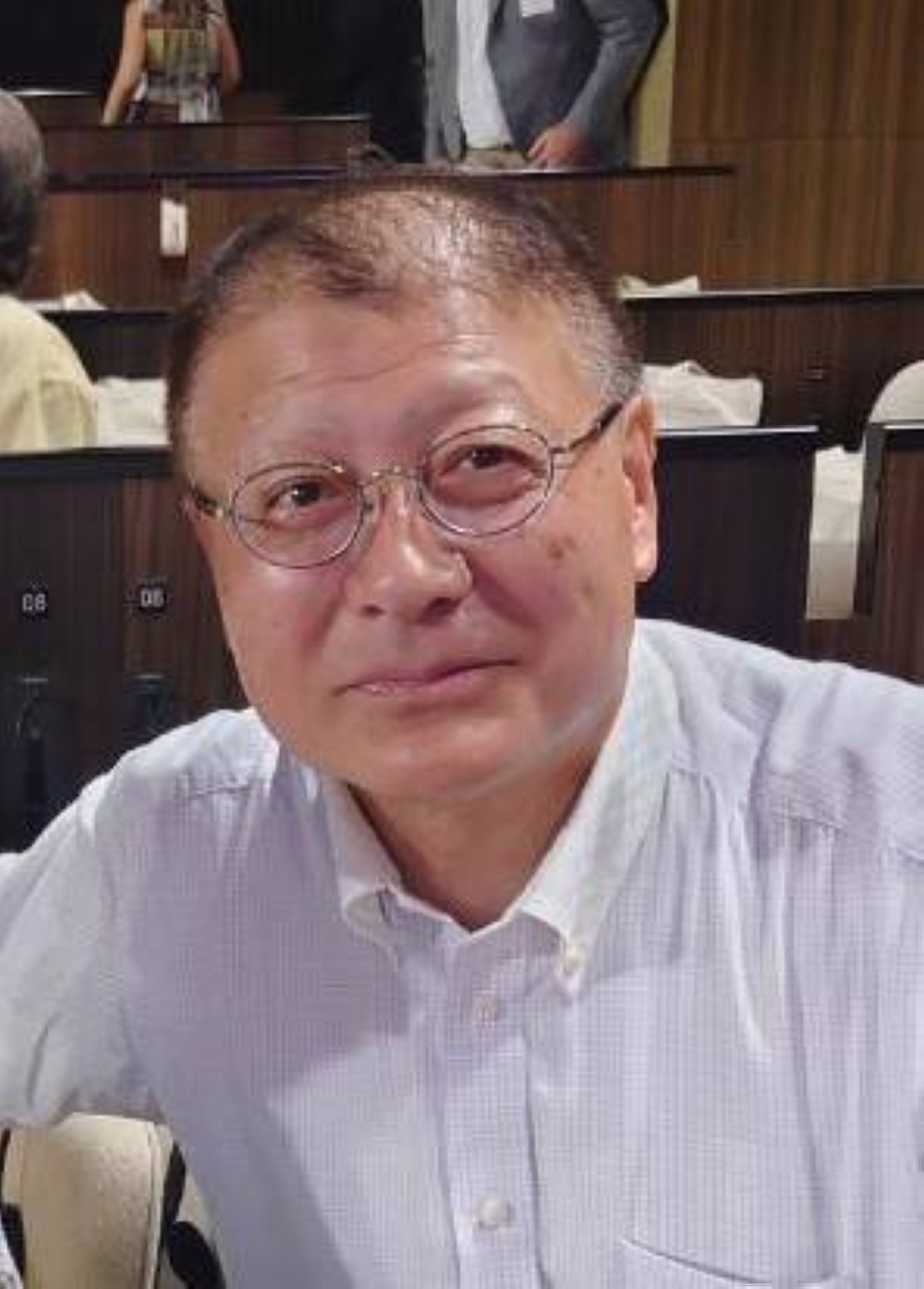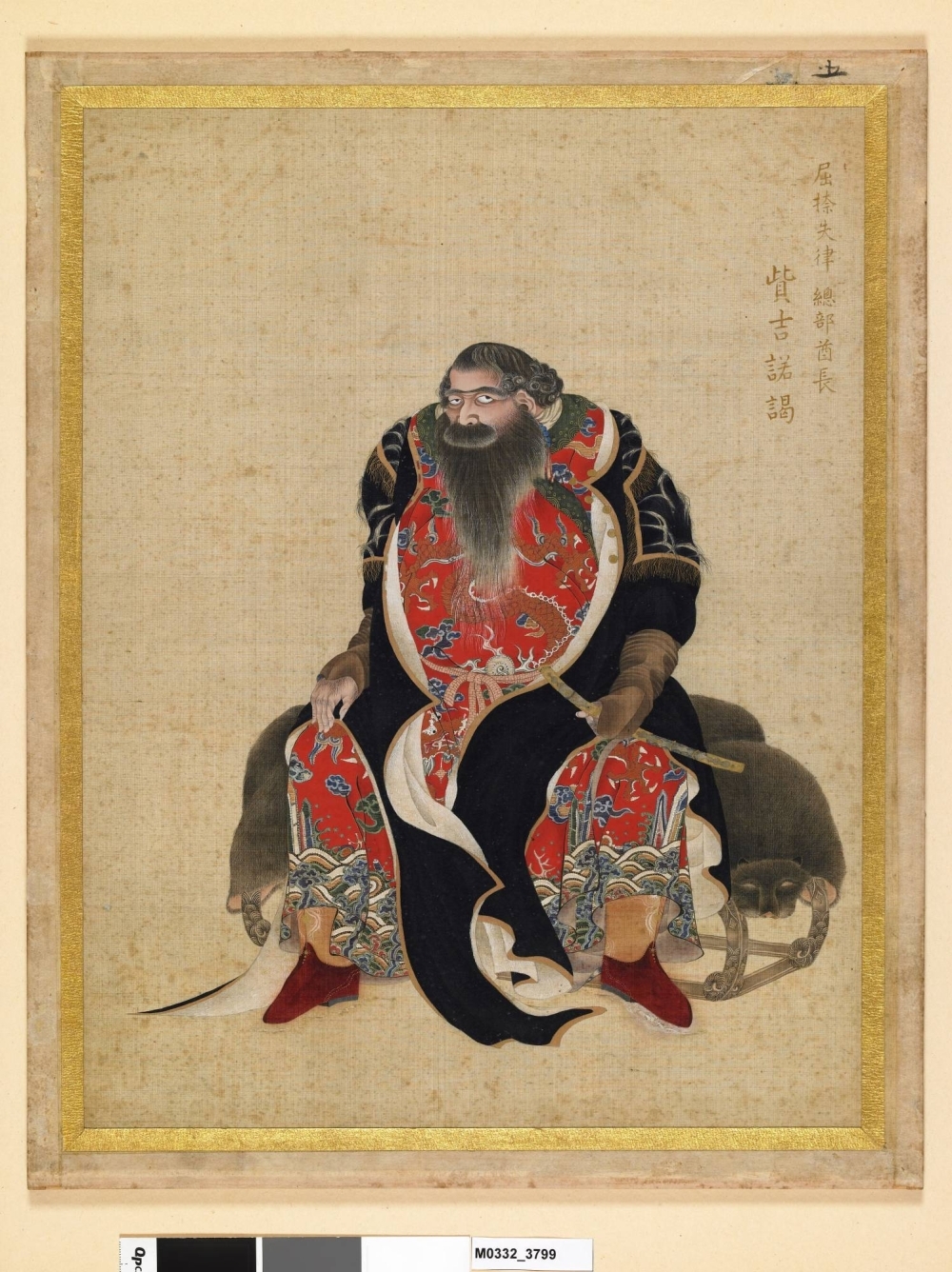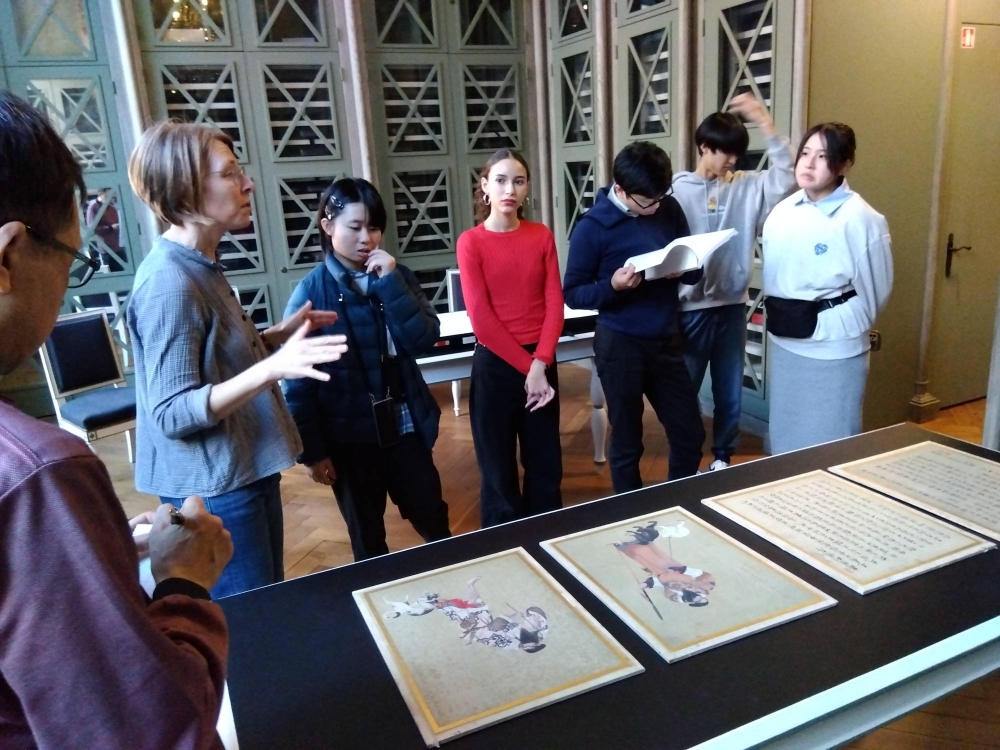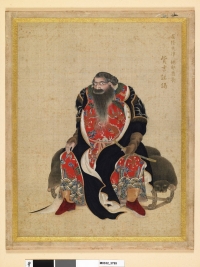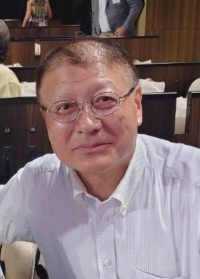On Oct. 26, 1984, Riki Kato read an article on the front page of the Hokkaido Shimbun that would change his life and send him in pursuit of a historical mystery that now spans four decades.
The newspaper, for which Kato worked as a reporter at the time, announced that day that 11 portraits of Ainu chieftains, completed in 1790 by the artist Hakyo Kakizaki, had been discovered in storage at the Museum of Fine Arts and Archaeology in Besancon, France. There were originally 12 paintings in the original set, collectively known as the “Ishu Retsuzo,” but one had disappeared.
How the silk paintings, each measuring 45.5 by 36 centimeters, ended up in a small French town nearly 10,000 kilometers from Hokkaido was not explained in the article.
“It was a real surprise to read about it, and I wanted to know what happened,” said Kato, now retired from the Hokkaido Shimbun and serving as head of the Alliance Francaise Sapporo.
Kakizaki was an artist and a member of the Matsumae clan, a Japanese clan that ruled Hokkaido at the time. The 12 Ainu chieftains portrayed had assisted Japanese forces in 1789 in helping quell an Ainu rebellion in a conflict known as the Kunashir-Menashi Rebellion.
Between 1994 and 1998, Kato was the newspaper's Paris correspondent, and was able to travel to Besancon and see the paintings for himself, even though they were not on public display. His work as the Paris correspondent and then a later career back in Japan meant he had little time to follow up on the mystery. But he never forgot about it.
“It’s known that the portraits were in Matsumae for a period of time after they were painted. What happened in the 19th century and how they made their way to France is unknown,” said Kato.
Nevertheless, he adds, there are several possible explanations.
“The first is that the portraits were brought back by a French soldier named Jules Brunet. Brunet was part of a group of 19 French soldiers who went to Hakodate (in Hokkaido) to assist the Tokugawa Shogun's forces during the 1868-69 Boshin War, which had spread to the Matsumae area as well," said Kato. "It was known that Brunet, who was born in a town not far from Besancon, loved paintings, and when he returned to France, he brought a lot of valuable Japanese antiques back with him, including paintings.”
The problem with that theory, however, is that the granddaughter of Brunet has said that she had never heard of any connection between the Ainu portraits and her grandfather, who died in 1911.
“The second possibility is that the portraits were brought to Tokyo by Kakizaki’s son when the Matsumae domain fell at the end of the Edo period (1603-1867). He may have fled to Tokyo and sold the portraits at some point after that, and they found their way to France," Kato added.
Another theory is that they came via Eugene-Emmanuel Mermet-Cachon, a French priest and Roman Catholic missionary and one of 19th century France’s most prominent experts on Japan. He was in Hakodate a decade before Brunet, arriving in 1859 and departing in 1863.
“During his time in Hokkaido, Mermet-Cachon developed a keen interest in the Ainu, compiling a dictionary of their language. In 1863, he published a small booklet on Ainu customs and religion. Mermet-Cachon is also from a town near Besancon,” Kato said.
However, Kato’s favorite theory, though one he admits he has yet to find solid proof for, is that the portraits ended up in Besancon via the brother of the Besancon museum's former curator Alfred Ducat, who died in 1898 and appears to have donated the portraits to the museum. Ducat’s brother was also a missionary, serving in Thailand, and had studied with Mermet-Cachon in Paris.
In an email interview with The Japan Times, Amandine Royer, curator of graphic arts at Besancon's Museum of Fine Arts and Archaeology, said the 11 Ainu chief paintings are being kept in a cabinet at the museum, protected from light and stored in boxes, where any visitor can ask to see them by appointment.
“They cannot be displayed permanently in the museum, as they are painted on silk, and would be rapidly and irreparably damaged if displayed in this way. The materials of which they are made allow them to be exhibited for relatively short periods, with limited and controlled lighting,” she wrote.
Their condition, she adds, remains exceptional for paintings created over 200 years ago, although they are very fragile and would benefit from cleaning and restoration work.
Since being rediscovered in 1984, the paintings have made it to Japan for a number of exhibitions, including at museums in Hakodate, Matsumae and Sapporo, as well as museums in Chiba and Osaka prefectures.
Currently, there are no plans to publicly exhibit the paintings for the next three years at least. But that has not stopped Japanese people from making the trek to Besancon to see them.
“We receive five to 10 Japanese visitors a year who come to see the paintings. These are always very interesting and moving moments. Everyone has their own observations or comments about them,” Royer said.
Visitors in January 2023 included Japanese high school students from Matsumae, Kakizaki's domain, who were shown the paintings. The trip to the museum and the private showing of the Ainu portraits were part of a larger homestay and exchange program that brought the students to eastern France’s Franche-Comte region, whose capital is Besancon.
While the paintings remain stored in France, Kato hopes arrangements can eventually be made to have them exhibited in Matsumae on a regular basis. At the same time, however, he is acutely aware that Ainu people see the portraits in a different light.
“These paintings are wonderful works of art. But from the point of view of the Ainu people, the leaders in the paintings cooperated with those who suppressed them. It’s a very humiliating history for them and it’s a point of view we must never forget,” Kato said.
In the meantime, Kato continues to pursue the mystery of how the paintings ended up in France. He admits that it’s one that may never be solved, given the age of the paintings and the lack of a clear paper trail. But this year, he hopes, will lead to more interest in both Japan and France in closing the case.
“It’s been 40 years since the Hokkaido Shimbun story came out," he said. "I hope that Japanese government agencies and researchers will use this anniversary to work together in their efforts to reach out to France, so we can deepen our understanding of the Ainu people and rekindle momentum for solving the mystery."



